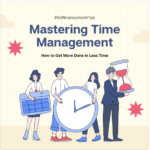Unpacking the Complexity of Paid Marketing
As a small business owner, the realm of paid marketing might seem intimidating and complex at first glance. It’s a world of PPC, CPM, CPA, conversions, click-through rates, bounce rates, and a host of other acronyms and jargon that might make you feel like you’ve landed on an alien planet. But don’t worry; this guide is designed to help you navigate the intricacies of paid marketing.
Paid marketing refers to any form of advertising that involves a cost each time a potential customer interacts with your ad. It encompasses a wide range of strategies and tactics, including search engine marketing (SEM), social media and display advertising, affiliate marketing, and much more. While the terms and tactics may seem convoluted, the essence of paid marketing is quite simple: it’s all about reaching your target audience when and where they’re most likely to be receptive to your message.
Small businesses might wonder why they should focus on paid marketing. After all, aren’t there free marketing strategies like organic search engine optimization (SEO) and social media engagement that can help you reach your customers?
While these free marketing strategies are important and effective, they often require a significant time investment to show results. In the fast-paced, competitive world of business, you might not have the luxury of waiting for these strategies to bear fruit. This is where paid marketing comes in.
Paid marketing offers the unique advantage of immediate visibility. With a well-planned paid marketing strategy, you can get your message in front of your target audience quickly and efficiently. Moreover, it offers scalability and precise targeting that few other marketing strategies can match.
What will this blueprint include?
This guide aims to offer a comprehensive roadmap to help small businesses navigate the landscape of paid marketing, particularly in the business-to-consumer (B2C) sector. We’ll delve into the importance of understanding your target audience, the value of a multi-channel strategy, efficient budgeting for paid marketing, and the techniques for ad optimization. We’ll also discuss the role of storytelling in your marketing approach.
Not only that, but you’ll also get to hear valuable insights from experts in the field. We’ve reached out to seasoned professionals who have navigated the labyrinth of paid marketing and come out on the other side with wisdom to share.
So sit tight and get ready to demystify paid marketing for your small business. Whether you’re a novice to the world of paid marketing or looking to refine your existing strategies, this article offers insights and guidance to help you succeed.
Decoding the Concept of Paid Marketing
What is Paid Marketing: Let’s start at the beginning: What exactly is paid marketing? In its simplest form, paid marketing involves paying to place your brand, product, or service in front of your target audience via different channels and platforms. Unlike organic marketing, which leverages non-paid methods to enhance visibility, paid marketing requires an upfront investment.
Paid marketing operates under various models, including Pay-Per-Click (PPC), where you pay a fee each time someone clicks on your ad, and Cost-Per-Mille (CPM), where you pay for every thousand impressions (views) your ad receives. The goal? To increase your brand’s visibility and ultimately drive conversions – which could be anything from making a purchase to signing up for a newsletter, depending on your business goals.
In the Business-to-Consumer (B2C) domain, paid marketing is particularly valuable. Why? Because consumer markets tend to be large, diverse, and highly competitive. Organic reach alone – that is, reach achieved without paying for advertising – can be slow and challenging to scale up.
Paid marketing can expedite the process, ensuring that your message reaches a larger audience faster. It allows you to target specific demographic segments, behaviors, and even individual interests, making sure your advertising spend is maximized towards those most likely to convert. And when combined with organic strategies, paid marketing can significantly amplify your reach and overall marketing impact.
Types of Paid Marketing Strategies
Paid marketing is a broad field encompassing a variety of strategies. Here are a few common types:
1. Search Engine Marketing (SEM): This involves paying to have your website appear on the results page of search engines like Google. It’s often based on a PPC model.
2. Social Media Advertising: Platforms like Facebook, Instagram, and LinkedIn offer paid advertising options that allow businesses to reach specific demographic segments within their user base.
3. Display Advertising: These are visual ads that appear on websites, social media platforms, and other digital mediums. They can include banners, overlays, and video ads.
4. Affiliate Marketing: In this model, businesses pay external websites (affiliates) a commission for driving traffic or sales to their site.
5. Influencer Marketing: Businesses pay influencers to promote their products or services to their followers on social media platforms.
6. Email Advertising: This involves paying to send promotional messages directly to the email inboxes of your target audience.
Each of these strategies has its strengths and can be effective depending on your specific goals, target audience, and industry. As we progress, we’ll delve into how you can choose the right strategy for your small business.
Demystifying the B2C Landscape
Understanding the B2C Market: B2C, or Business-to-Consumer, refers to the process of selling products and services directly to consumers. Unlike B2B (Business-to-Business) where sales are usually high-value and conducted in large quantities, B2C sales are typically lower in value but higher in volume.
B2C customers are usually individual consumers who make buying decisions based on personal preferences, needs, and budgets. The buying cycle in B2C markets is generally shorter than in B2B markets, as purchasing decisions tend to be less complex and do not involve as many stakeholders.
Key characteristics of B2C markets include high competition, a broad customer base, rapid buying cycles, and high sensitivity to consumer trends and preferences.
Why is B2C Marketing Different?
Marketing in the B2C sector differs substantially from B2B marketing. B2C marketing is more emotional, personal, and customer-centric. The messaging tends to focus on benefits, values, and emotions related to the product or service, appealing to consumers’ personal needs and desires.
B2C marketing campaigns are typically targeted toward a broader audience and use a wider range of marketing channels, including social media, TV, radio, print, and email. The content is often simple, direct, and designed to trigger a quick decision from the consumer.
The Role of Digital Platforms in B2C Marketing
In today’s digital age, online platforms play a pivotal role in B2C marketing. Social media channels, search engines, and other digital platforms have fundamentally transformed the way businesses connect with their customers.
Search engines like Google enable businesses to reach consumers actively seeking their products or services. Social media platforms allow businesses to engage with their customers in a more personal and interactive way, build strong relationships, and gain valuable insights into their preferences and behaviors.
E-commerce platforms have made it possible for businesses to sell their products and services online, allowing consumers to shop from the comfort of their homes. Meanwhile, digital advertising platforms provide businesses with powerful tools to target their ads to the right audience, track their performance in real time, and optimize their marketing campaigns for better results.
In essence, digital platforms have provided businesses with an unprecedented opportunity to reach a global audience, engage with their customers in meaningful ways, and drive growth in the highly competitive B2C market.
Knowing Your Audience
Why Audience Understanding Matters
In the world of B2C marketing, understanding your audience isn’t just important, it’s critical. Without a thorough understanding of who your audience is, what they want, and how they behave, your marketing efforts can quickly become a shot in the dark.
Understanding your audience helps in designing effective marketing strategies, crafting compelling messages, and building meaningful relationships with your customers. It can guide your product development, influence your pricing strategy, and inform where and how you should promote your offerings.
In essence, a deep understanding of your audience can give you a competitive edge, ensuring that your marketing efforts resonate with the right people and yield the desired results.
Tools and Strategies for Audience Analysis
Fortunately, there are numerous tools and strategies that businesses can use to gain a deeper understanding of their audience.
1. Market Research: This involves gathering and analyzing data about your target market, including demographic, geographic, psychographic, and behavioral data.
2. Social Media Analytics: Platforms like Facebook, Instagram, and Twitter offer built-in analytics tools that provide valuable insights into your audience’s behaviors, interests, and interactions with your content.
3. Customer Surveys: These are questionnaires that you can send to your customers or prospects to gather direct feedback about their needs, preferences, and perceptions of your brand.
4. Web Analytics: Tools like Google Analytics can help you understand your audience’s online behavior, including how they find your website, which pages they visit, and how long they stay.
5. Customer Reviews and Feedback: Reviewing customer comments and feedback can provide insights into what your customers think about your products or services, their pain points, and areas for improvement.
Translating Audience Insights into Marketing Action
Once you’ve gained insights into your audience, it’s time to translate those insights into action. Here’s how:
1. Tailor Your Messaging: Craft your marketing messages in a way that speaks directly to your audience’s needs, desires, and pain points. Use the language that they use and present your products or services as solutions to their problems.
2. Choose the Right Channels: Use your audience insights to determine where your customers are most active and receptive. If your audience spends a lot of time on Instagram, focus your efforts on that platform.
3. Personalize Your Approach: Use audience data to deliver personalized marketing experiences. This could mean targeting specific demographic segments with tailored ads or using email marketing automation to send personalized messages based on customer behavior.
4. Adjust Your Offerings: Use customer feedback to improve your products or services and address any common issues or concerns that your audience has.
5. Monitor and Adapt: Audience preferences and behaviors can change over time. Continually monitor your audience insights and be ready to adapt your marketing strategies as needed.
One of the best ways to navigate the intricate world of paid marketing is to learn from those who’ve been there, done that and succeeded. In this section, we’re going to introduce some valuable expert insights that can guide your paid marketing journey. These are firsthand experiences, tips, and strategies shared by marketing professionals who’ve successfully helped small businesses thrive in the B2C sector using paid marketing strategies.
Insights into Effective Paid Marketing
Our first expert insight comes from Huzaifa Ahsan, a multipreneur and marketing consultant at KodeKloud with over 5 years of experience in helping businesses navigate the digital landscape. Here are some of Huzaifa’s tips on effectively using paid marketing:
1. Analyze your audience and define the channel: It’s essential to understand where your target audience is and define the channel accordingly. Every platform has a different audience, so by analyzing your target audience, you can determine which platform is the best fit for your business.
2. Consider a multichannel strategy: It’s recommended to consider a multichannel strategy to test and learn for future activities. It can help you identify the best-performing channels and optimize your advertising spend.
3. Define the budget: Based on the audience size and channel selected, it’s crucial to define the budget. Start with a small budget and increase it gradually as you see results.
4. Continuously optimize the ads: You can continually optimize your ads to get the best results. If you’re not getting the expected results, consider hiring a pro to deal with the inbound leads.
5. Storytelling: A good copywriter who can write entertaining captions and stories for social media can be a valuable asset. Tell a story that resonates with your target audience, as everybody wants to be the first thing that comes to mind when they think about the product or service you’re selling.
Remember, every business is unique, and there’s no one-size-fits-all approach to paid marketing. But by leveraging expert advice and adapting it to your specific needs and context, you can create a more effective and successful paid marketing strategy.
The Multi-Channel Marketing Approach
A multi-channel marketing approach involves engaging with your customers across multiple platforms or channels. This could include social media platforms, email marketing, search engine marketing, in-person events, and more.
The key advantage of a multi-channel approach is that it allows you to meet your customers where they are, improving the customer experience and increasing the chances of conversion. Furthermore, by diversifying your channels, you reduce the risk associated with relying on a single platform for your marketing efforts.
In the B2C sector, where consumer behavior is increasingly multi-channel (for instance, a consumer might see a product on Instagram, research it on Google, and finally buy it on an e-commerce site), a multi-channel approach is more of a necessity than a choice.
Steps to Devise a Multi-Channel Strategy
1. Understand Your Audience: The first step in devising a multi-channel strategy is understanding where your audience spends their time. Use market research and customer analytics to identify the channels your customers use the most.
2. Set Clear Goals: What do you want to achieve with your multi-channel strategy? Whether it’s driving more traffic to your website, increasing sales, or improving brand awareness, having clear goals can guide your strategy and help you measure success.
3. Choose Your Channels: Based on your audience analysis and goals, select the most appropriate channels for your strategy.
4. Create Consistent Messaging: Ensure your messaging is consistent across all channels to create a cohesive brand image.
5. Monitor and Optimize: Track the performance of your campaigns across different channels and continually optimize your strategy based on your findings.
Managing Your Marketing Budget
Understanding the Economics of Paid Marketing
Managing your marketing budget effectively is a crucial part of successful paid marketing. Before you start allocating funds, it’s vital to understand the economics of paid marketing. This includes knowing the costs associated with various marketing channels, understanding key metrics like cost per click (CPC), cost per impression (CPM), and return on ad spend (ROAS), and considering the overall profitability of your marketing campaigns.
Strategies for Efficient Budget Allocation
Efficient budget allocation can significantly impact your marketing efforts’ effectiveness. Here are some strategies to consider:
1. Prioritize High-Performing Channels: Allocate more of your budget to the marketing channels that have proven to be the most effective for your business.
2. Test and Learn: If you’re unsure about a channel’s potential, consider allocating a small budget to test its effectiveness before investing heavily.
3. Diversify: Don’t put all your eggs in one basket. Spread your budget across multiple channels to reduce risk and increase your chances of reaching more customers.
4. Seasonal Adjustments: Some periods may require increased spending, such as holidays or promotional events. Anticipate these fluctuations and plan your budget accordingly.
Monitoring and Adjusting Your Marketing Budget
Finally, it’s important to continuously monitor your marketing budget and adjust it based on performance and changing business needs.
Use analytics tools to track the performance of your marketing campaigns. Keep an eye on key metrics like conversion rates, customer acquisition costs, and ROAS to understand how effectively your budget is being used.
If a campaign isn’t delivering the expected results, don’t be afraid to adjust your budget allocation. On the other hand, if a campaign is performing exceptionally well, you might consider increasing your investment to maximize your results.
Remember, budget management is a dynamic process. It requires constant monitoring, testing, and optimization to ensure your marketing budget is driving the best possible results for your business.
Insight on Balancing Budget and Performance
Our second expert insight comes from Maria Torres, a seasoned financial advisor at Premium Decorations with over a decade of experience helping businesses optimize their financial strategies.
In Maria’s experience, a successful paid marketing strategy is all about finding the right balance between budget and performance.
She recommends small businesses start with a modest budget and focus on optimizing their marketing campaigns to maximize return on investment. “The goal isn’t to spend more,” Maria explains, “but to spend smarter. Your budget is a tool, not a limit. It’s about finding the sweet spot where your marketing spend is driving the maximum impact for your business.”
Practical Tips for Budgeting
1. Start Small: When it comes to paid marketing, starting small allows you to test the waters without risking too much. Once you understand what works best for your business, you can gradually increase your budget.
2. Monitor Performance: Keep a close eye on your campaign performance. Use analytics tools to track key metrics and understand the return on your marketing spend.
3. Adjust Regularly: Your marketing budget isn’t set in stone. It should be flexible and adaptable, changing based on your business needs and the performance of your marketing campaigns.
4. Spend Smarter, Not More: Remember that the goal isn’t to spend more, but to spend smarter. By focusing on optimizing your campaigns, you can get the most out of your marketing budget.
5. Seek Expert Advice: If you’re unsure about how to manage your marketing budget, consider seeking advice from a financial advisor or a marketing professional. They can provide valuable insights and guidance based on their expertise and experience.
Optimization of Ads for Better Returns
Ad optimization is a critical component of paid marketing strategy. It’s the process of adjusting and improving your ads to increase their performance and efficiency.
This involves everything from tweaking the ad copy and design to fine-tuning the targeting criteria and experimenting with different bidding strategies. Ad optimization is essential because it ensures you’re getting the best possible return on your ad spend, making your marketing efforts more cost-effective and profitable.
Techniques for Effective Ad Optimization
Several techniques can help you optimize your ads effectively:
1. A/B Testing: Also known as split testing, A/B testing involves running two different versions of an ad to see which one performs better. This can help you identify the most effective ad elements and refine your strategy.
2. Targeting Optimization: Refine your audience targeting based on the performance data. You might need to narrow or expand your targeting criteria or adjust your targeting settings to reach a more relevant audience.
3. Keyword Optimization: For search engine marketing, keyword optimization is critical. You’ll want to regularly review and update your keyword list to ensure you’re targeting the most relevant and effective keywords.
4. Ad Scheduling: Adjust the times when your ads are displayed based on when your audience is most active and responsive.
Monitoring and Tweaking Your Ads for Best Results
Monitoring the performance of your ads and making necessary tweaks is a continuous process, not a one-time task.
You should regularly review your ad performance data and use the insights to make adjustments. This could mean tweaking the ad copy, changing the visuals, adjusting the targeting criteria, or even changing the ad format.
Remember, even small adjustments can have a significant impact on your ad performance. So, don’t underestimate the power of ad optimization in maximizing your return on ad spend.
Insight on Ad Optimization
Our third expert insight comes from Emma Lee, a seasoned digital marketing professional and the head of the marketing team at The FB Store. With her vast experience in running successful ad campaigns for various businesses, Emma provides a unique perspective on ad optimization.
According to Emma, the value of professionals in ad optimization cannot be overstated. “Optimizing ads is both an art and a science,” Emma says. “Understanding the data is crucial, but so is crafting the right message that resonates with your audience. Professional marketers bring a wealth of experience and expertise to the table that can help small businesses make the most of their paid marketing efforts.”
Enhancing Ad Optimization
1. Professional Experience: Expert marketers have worked with various businesses and ad campaigns, giving them a wealth of experience to draw from. They can bring new ideas and strategies to your business that you may not have considered.
2. Data Analysis: Professionals are skilled in interpreting marketing data. They can use this data to make informed decisions about your ad campaigns and optimize them for better results.
3. Creative Input: Marketers are also creative professionals. They can help craft compelling ad copies and creatives that resonate with your audience and drive engagement.
4. Ongoing Optimization: With an expert on your side, you can ensure your ads are continually monitored and optimized for peak performance.
5. Time and Effort: By working with a professional, you can save time and effort that you can invest in other aspects of your business.
Remember, while hiring a professional might seem like an additional expense, the value they bring in terms of improved ad performance and ROI can be well worth it.
The Art of Storytelling in Marketing
Storytelling plays a crucial role in effective marketing. By crafting compelling narratives around your brand, products, or services, you can captivate your audience, build a deeper emotional connection, and drive more engagement and conversions.
In the context of paid marketing, storytelling can significantly boost the effectiveness of your ads. A well-crafted narrative can make your ads more memorable, differentiating your brand from the competition and fostering a stronger connection with your target audience.
Techniques for Compelling Storytelling
Crafting a compelling narrative involves several key techniques:
1. Understand Your Audience: A good story starts with a clear understanding of your audience. Know their needs, desires, fears, and aspirations, and craft your story in a way that resonates with them.
2. Create Relatable Characters: Whether it’s a satisfied customer, a dedicated employee, or a business owner, having relatable characters in your story can help your audience connect with your brand on a deeper level.
3. Keep It Authentic: Authenticity is key in storytelling. Your story should be true to your brand and your audience. Avoid exaggerated claims or false promises.
4. Incorporate Conflict and Resolution: A good story involves some form of conflict or challenge and a resolution. This could be a problem your product solves or a challenge your business has overcome.
5. Use Emotion: Emotion is a powerful tool in storytelling. It can make your story more engaging and memorable, and drive a stronger response from your audience.
Conclusion
If you’re a small business ready to explore the realm of paid marketing, remember that it’s a journey, not a sprint. It may take time and several attempts to find what works best for you. However, the potential rewards in terms of increased visibility, more customers, and improved sales make it well worth the effort.
Stay patient, keep learning, and don’t hesitate to seek expert help when needed. The world of digital marketing is continually evolving, and your willingness to adapt and grow will be your biggest asset.
Whether you’re deciding on the right channel, defining your budget, or optimizing your ads, having expert guidance can significantly enhance your chances of success in B2C marketing. As you embark on your paid marketing journey, these insights will serve as a valuable compass guiding your way to success.








